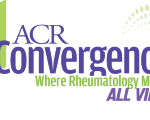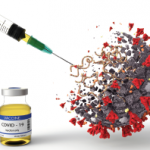Research by Charles-Shoeman C, et al.
Additional information contextualizing the risk for MACE events was presented from the same trial. Of particular importance to clinicians is to consider the generalizability of the results. More specifically, should clinicians’ concerns for MACE associated with JAK inhibitors apply to their prescribing for all RA patients?
In additional subgroup analyses reported in this abstract, MACE risk with tofacitinib appeared largely confined to higher risk individuals (e.g., age ³65 or those who ever smoked). Event rates in such individuals receiving tofacitinib were 13.1 per 1,000 patient years of exposure, compared with 9.3 per 1,000 patient years, a non-significant 1.41-fold increase (95% CI 0.93, 2.15). In contrast, individuals aged 50–64 and who never smoked were at much lower risk (4.1 per 1,000 patient years), no different than TNF inhibitor-treated patients who had a nearly identical risk, 4.2 per 1,000 patient years, HR 0.98 (95% CI 0.42, 2.31).
These results highlight the importance of patient selection in prescribing JAK inhibitor therapy. Importantly, they suggest that for patients with RA at lower risk for cardiovascular disease (CVD) events, the safety concerns for MACE with JAK inhibitors (rather than TNF inhibitors) may be minimal.
Abstracts 1940 & 19413,4
1940: Malignancies in patients aged ≥50 years with RA and ≥ 1 additional cardiovascular risk factor: Results from a phase 3b/4 randomized safety study of tofacitinib vs TNF inhibitors Research by Curtis J, et al. (Author’s note: I am an author on this abstract.)
1941: The risk of venous thromboembolic events in patients with RA aged ≥ 50 years with ≥ 1 cardiovascular risk factor: Results from a phase 3b/4 randomized safety study of tofacitinib vs TNF inhibitors Research by Charles-Shoeman C, et al.
For cancer, a hazard ratio of 1.48 (95% CI 1.04, 2.09) for all malignancies, excluding non-melanoma skin cancer (NMSC), and 2.02 (95% CI 1.17, 3.50) for NMSC were observed for tofacitinib compared with TNF inhibitors. However, as with the MACE considerations, patient selection remains paramount.
In the subgroup of lower risk individuals (i.e., aged 50 to <65, and never smoked), there was a low rate of malignancy (5.1 per 1,000 patient years) that did not differ from TNF inhibitors (HR 1.16, 95% CI 0.53, 2.55). Event rates for venous thromboembolism (VTE) were likewise low, particularly in those without a history of VTE: 3.1 per 1,000 in patients receiving 5 mg of tofacitinib twice daily. The NNH for VTE was 763 compared with TNF inhibitor therapy.



